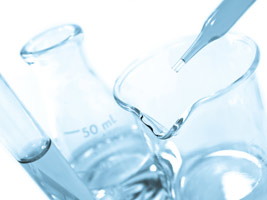
- The TRUTH About America's Water
- Water Pollutants that Cause Illness
- Are Minerals in Water Important for Health?
- Top 5 Drinking Water Contaminants
- Do I Need a Whole House Water Filter?
The Correct Procedures in Preparing Water Sample for Testing
Have you ever been concerned about your home water? If you are not satisfied with your water, you can simply bring the water sample to the local water lab, water-related business and see the detailed components of your water.
It is worth noticing that regardless of where or how analysis is performed, there are certain precautions that should be observed in preparing a water sample for shipment to a laboratory. Careless handling of a sample can produce highly misleading results.

To achieve valid results, the following steps should be taken:
- Secure a container (16 oz. size preferable) of a type that will not permit contamination of the sample. Clean rubber stoppered, resistant glass bottles or polyethylene containers are recommended. A plastic screw-capped bottle may be used. It is advisable to use a new bottle for each test. If this is not possible, the bottle and cap should be washed in soap and water and thoroughly rinsed before use.
- Before taking samples through metal lines and valves, first, allow sufficient flow of water to wash out the system.
- Rinse the container thoroughly. Use the water that is to be analyzed for this purpose.
- Fill the bottle to a point just below the shoulder. Leave just a little air space.
- Immediately after filling the container, jot down all pertinent information regarding the water at the time the sample is taken. Facts to include: source of the sample; physical appearance of the water (clear, dirty, highly colored, etc.); odor, if any; taste as reported by the homeowner, if any.
- Do not take the sample from a swing-type faucet. Inspect the faucet for leaks. Select another faucet if there is leaking. Disinfect the faucet with bleach or a flame.
- Send the sample to the lab for testing.
- If needed, store the sample in the refrigerator before taking it to the lab.
A water sample needs to be submitted to the lab within 48 hours of collection. In some cases, it must be kept cold prior to testing. Care must be taken to prevent anything but the water from contacting the inside of the bottle or the cap. Contaminants are often present in small amounts. Careless sampling prevents accurate test results.

